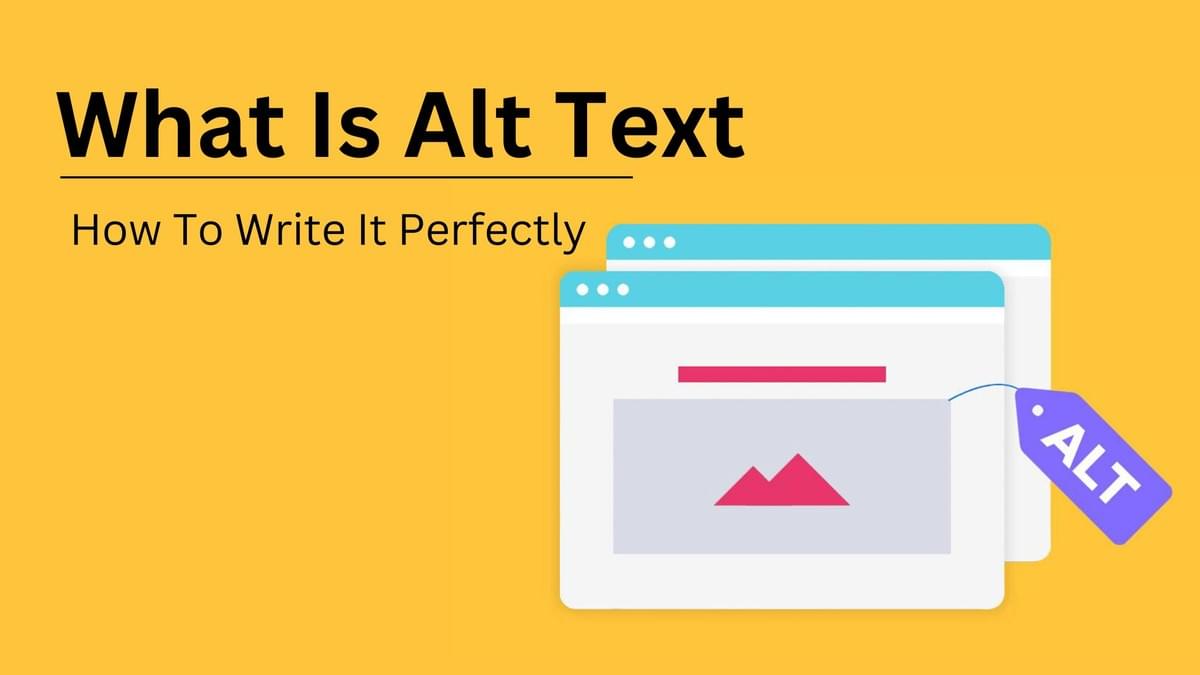
Alt text, short for alternative text, is a crucial but often overlooked element in web accessibility and SEO. In this extensive guide, we delve into what alt text is, why it matters, and how to write it effectively to enhance both user experience and search engine visibility.
Understanding Alt Text
Alt text is a textual description that is added to an HTML image tag. Its primary purpose is to provide a textual alternative to visual content for users who cannot see images due to visual impairment or other reasons. Alt text also plays a vital role in SEO by providing context to search engine crawlers about the content of an image.
Why Alt Text Matters
- Accessibility: Alt text makes web content accessible to individuals with visual impairments who use screen readers.
- SEO Benefits: Descriptive alt text helps search engines understand the content of images, contributing to improved rankings in image search results.
- Usability: Alt text enhances the user experience by providing meaningful descriptions of images, which can clarify content and aid comprehension.
Introducing SFWPExperts a distinguished WordPress website design company renowned for its expertise in creating visually appealing and functional websites. Specializing in WordPress, they combine creative flair with technical proficiency to deliver customized digital solutions that empower businesses to thrive online. Their focus on quality and client satisfaction sets them apart in the industry.
Writing Effective Alt Text
1. Describe the Image Accurately
- Be Descriptive: Provide a concise and accurate description of the image.
- Include Relevant Details: Mention important elements, such as people, objects, actions, and context.
- Focus on Context: Consider the purpose of the image and its relevance to the surrounding content.
2. Keep It Concise
- Length: Aim for alt text that is neither too short nor overly verbose. A sentence or two is typically sufficient.
- Avoid Keyword Stuffing: Alt text should be natural and focused on describing the image, not stuffing keywords.
3. Use Keywords Appropriately
- Relevance: Include relevant keywords that describe the image accurately and align with the surrounding content.
- Natural Integration: Incorporate keywords naturally into the alt text without compromising clarity and accuracy.
4. Be Specific and Purposeful
- Specificity: Provide specific details that convey the image's content and context effectively.
- Purpose: Consider why the image is included and what message it conveys to the audience.
Read More: What Is Alt Text & How To Write It Perfectly
Read More Articles:
- SEO for WordPress: The Ultimate Guide for 2024
- Top AI Plugins for WordPress: Revolutionizing Your Website in 2024
- How to Make a WordPress Website in 2024 (Ultimate Guide)
- OpenAI’s GPT-3.5 vs GPT-4: A Comparative Analysis of Advanced AI Language Models
- Top 10 Free Website Builders: Elevating Your Online Presence Without Cost
- Artificial Intelligence Integrating Web Development: Enhancing User Experience and Efficiency
- Points to know before creating a custom WordPress landing page
- Best Free WordPress Themes: Elevate Your Website Design Without Cost
- How To Fix Broken Backlinks In 2024
- SEO Tips: How To Analyze Competitors’ Sites For SEO
- How To Make A Great 404 Page?
- Social Media Marketing Tips: Strategies for Effective Engagement and Growth
Visit Site: Web Design Service Agency
Reference Profile Websites:
